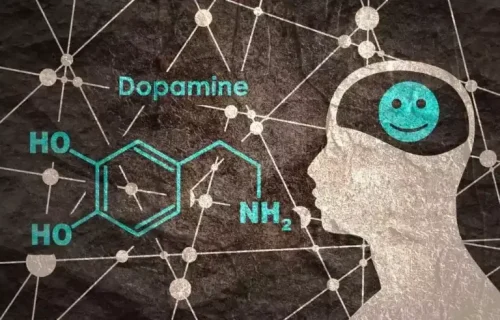
This will assist you in better understanding which programs may be the best fit for your specific requirements. Our mission is to support young adults on their transition to independence with residences that are affirming and support growth, healing and community. The Asian Development Bank is committed to achieving a prosperous, inclusive, resilient, and sustainable Asia and the Pacific, while sustaining its efforts to eradicate extreme poverty.

How Does it Differ from Other Types of Housing Programs?

In addition to more traditional types of housing, recovery housing providers also have a responsibility to comply with the Fair Housing Act. Since the medication prescribed to the resident is necessary in connection to their disability, that resident could request a reasonable accommodation in order to receive permission from the housing provider to continue with their treatment plan, while living at the property. The term NIMBY (or “Not in My Backyard”) describes folks who oppose the location of something considered undesirable – in this case, recovery housing – in one’s neighborhood. The ADAMHS Board of Cuyahoga County defines recovery housing as “a safe and healthy living environment that promotes abstinence from alcohol and other drugs and enhances participation and retention in traditional clinical treatment.
People in Recovery Have the Right to Fair Housing
Join us in our mission to elevate the standard of recovery living, making a lasting difference in thousands of lives each year. SAFE Project believes that quality recovery housing should be defined by the individual and tailored to suit their specific needs. Meetings with civil society organizations, community members, and other development partners were organized to further assess the community’s needs and gain perspective on ongoing and planned development efforts in Sindh. Two years after the devastating floods that claimed the lives of 1,700 people and affected some 33 million people in Pakistan, many communities in Sindh—the hardest-hit among the affected provinces—are still facing challenges in the recovery process.

Homelessness or Risk of Homelessness
Previous incarceration presents significant challenges to accessing housing, treatment, health care, and other important basic needs. People with a history of incarceration are also seven times more likely to experience homelessness, creating even more barriers to safety and stability. While federal fair housing law does not explicitly prohibit criminal background screening, the U.S. Department of Housing and Urban Development (HUD) has released guidance and a memo in recent years, explaining how the Fair Housing Act applies to housing policies with regard to criminal background checks.
State Disaster Recovery New Housing Grant Program
This opens opportunities to improve the design and delivery of services and facilities in critical sectors, such as health and education. It also enhances project effectiveness and ensures the sustainability of these interventions. People in recovery from substance use disorders are protected from housing discrimination under the Fair Housing Amendments Act of 1988, which prohibits discrimination based on disability.

Housing Information
This suggests an initial commitment to sobriety and supports the individual’s resolve to not using substances. You may be asking what sets a recovery housing program apart from other forms of housing. If you look a little further, you’ll find that a recovery housing program’s distinguishing trait is its commitment to providing a safe place to live as well as critical supportive services. Our Board of Directors is composed of trailblazers in the recovery residence sector, bringing together a rich tapestry of expertise, compassion, and unwavering dedication. With decades of collective experience in shaping policies, enhancing community support, and pioneering innovative recovery solutions, they embody a shared vision of empowerment and transformative care. Despite having limited financial resources, communities were willing to take ownership of the reconstruction process—an encouraging sign of the project’s long-term sustainability.
- Recovery housing programs utilize a comprehensive approach to address the dual challenges of homelessness and addiction.
- Since the medication prescribed to the resident is necessary in connection to their disability, that resident could request a reasonable accommodation in order to receive permission from the housing provider to continue with their treatment plan, while living at the property.
- The lack of affordable housing is also another barrier for Americans across the country, including the recovery community.
- Recovery housing programs, addiction, and homelessness are all intertwined concerns that require a diversified response.
- The implementing partners for project are the Health and Nutrition Development Society, Sustainable Actions to Access Financial Capital Opportunities, Thardeep Rural Development Programme, National Rural Support Programme, and Sindh Rural Support Organization.
Comprehending this correlation becomes essential for effectively addressing the issue. DWELL offers more than recovery housing, but a unique, supported living community for young adults in one of Manhattan’s most vibrant residential neighborhoods. Recovery residences provide a structured, supportive environment for individuals recovering from addiction, promoting the acquisition and practice of vital recovery skills. With varying levels of support, from peer-driven to medically supervised settings, these residences are pivotal in nurturing the journey to sobriety and wellness. All OASAS housing providers and their facilities must comply with these and other requirements set out in Medicaid Home and Community Based Services regulations. In accordance with the SUPPORT Act, the Department published two notices in the Federal Register with the requirements for the Recovery Housing Program.
Education in Emergencies and Child Protection Joint Needs Assessment: Pakistan 2023
This underscores the importance of calibrating project interventions to the unique needs of each family or community to achieve maximum project impact. The visits provided insights into how implementation mechanisms can be calibrated and tailored to meet the specific needs of different beneficiary communities. The approaches and lessons may also be replicated to improve the design, delivery, and evaluation of other development projects for other regions facing similar contexts and challenges. In addition, the project will finance the construction of community infrastructure for 100,000 households, help restore the livelihood of 6,000 flood-affected families in Sindh, and help residents develop skills in resilient housing and community infrastructure. The National Alliance to End Homelessness does not provide direct services such as housing or case management.
Each September, National Recovery Month is celebrated to honor the New Beginning Recovery Review strength and resilience of the recovery community, as well as the dedication of service providers and communities who make recovery in all its forms possible. Additionally, it is a time for us to rethink how we can each do our part in order to ensure that every American has access to the services and support they need to recover and rebuild their lives. It’s because these factors establish a clear path for people struggling with addiction and homelessness, providing them with a much-needed life raft toward recovery and stable housing. HUD’s Continuum of Care program provides funding for housing and support services for individuals experiencing homelessness. DWELL Recovery is not an addiction treatment, rehabilitation, medical or health services organization.
From Homelessness to Hope: The Power of Recovery Housing Programs in rebuilding lives.
HUD’s 2022 Memo regarding its 2016 Guidance on this topic recommends private housing providers not use criminal history to screen tenants for housing. Criminal history is not a good predictor of housing success and, in fact, often causes disproportionate harm to Black and Latinx communities, due to racial disparities within the criminal legal system. Finally, people need a safe place to live to fully engage in substance use treatment and recovery services. Recovery housing programs, addiction, and homelessness are all intertwined concerns that require a diversified response. We can develop a system that not only gives urgent aid but also focuses on long-term rehabilitation and self-sufficiency by merging the work of recovery housing programs with HUD’s Continuum of Care. The project’s approach, which combines housing solutions with community infrastructure and community resilience support (e.g., livelihood recovery assistance) offers a replicable model as an affordable, resilient, and sustainable housing solution.
